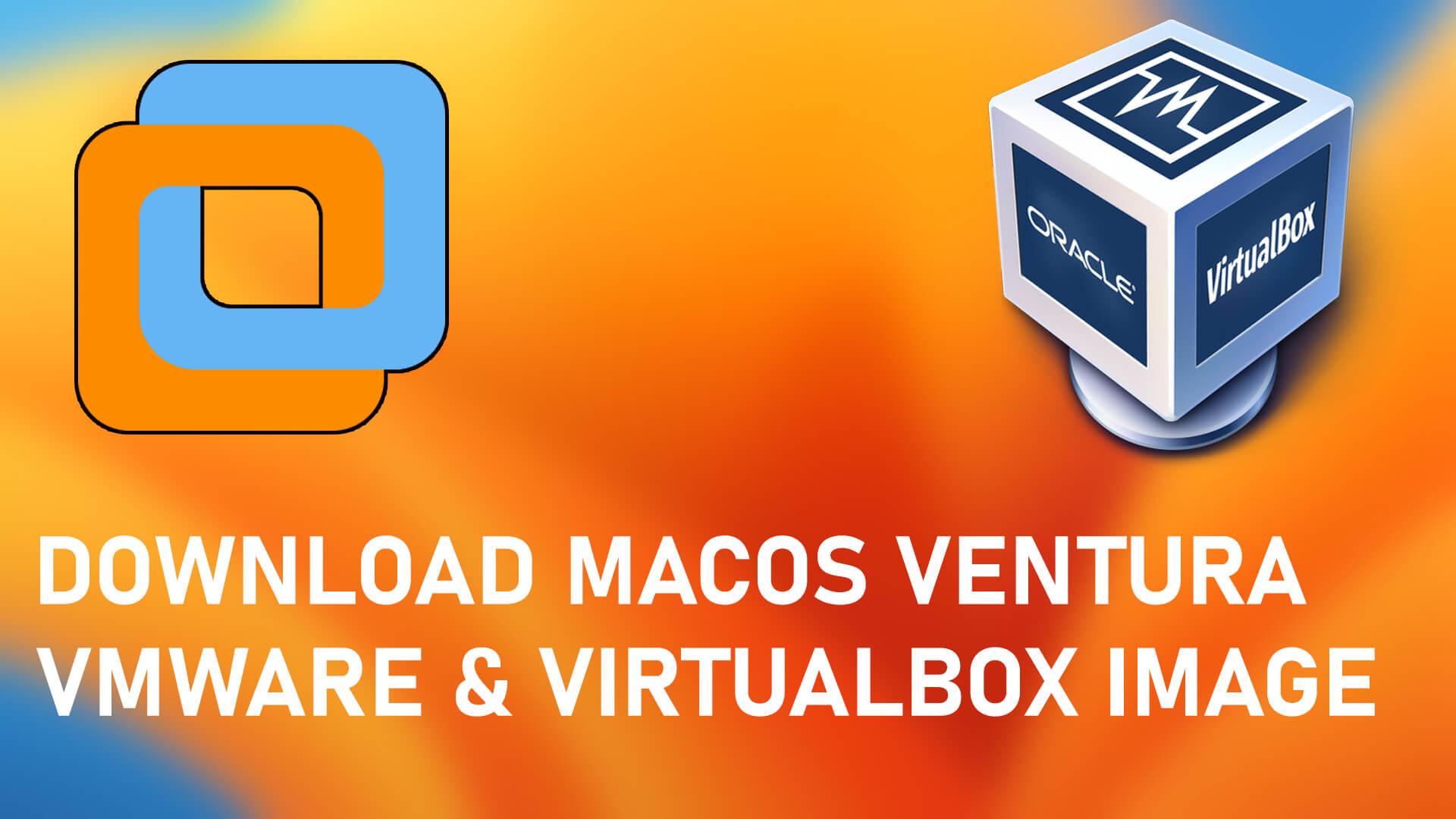How to Install macOS Big Sur on VMware on Windows 10/11?
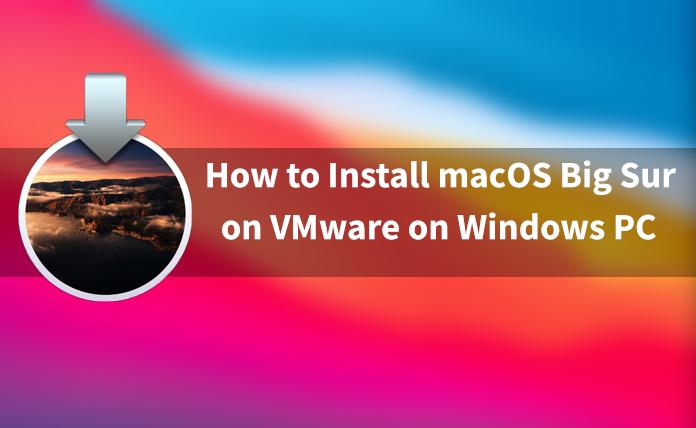
In this guide, I am going to guide you on How to Install macOS Big Sur on VMware on Windows PC. You might know that macOS Big Sur is the latest operating system Apple. It is introduced on 22nd June 202 at the World Wide Developer Conference. The final version is not released yet, it is now on Beta which is somehow laggy and has errors. Rumors are saying that it is one of the greatest and successful operating system all around. However, macOS Big Sur has got many mind-blowing features and functionalities for Apple users. Apple has brought a lot of amazing changes in macOS Big Sur than the other operating system. The main changes are on Dock, Safari, Notification Center, Menu bars, Maps, Messages, Control Center, and many more features that you would enjoy using it.
It really doesn’t matter which operating system you are using, you can easily install and use macOS Big Sur. On Mac, it is definite that you can use but it should be compatible with macOS Big Sur. There is a big question in the mind of Windows user that can I install macOS Big Sur on Windows, my answer is probably yes to them. Because you have the virtual machine in order to install and use macOS Big Sur. For the purpose of this guide, we are going to Install macOS Big Sur on VMware on Windows PC.
Recommended Guides:
- How to Install macOS Big Sur on VirtualBox on Windows PC
- How to Fix macOS Big Sur Screen Resolution on VirtualBox
Steps to Install macOS Big Sur on VMware on Windows PC
Step 1. Download Required Files
In order to Install macOS Big Sur on VMware on Windows PC, you will need some required files. The most important file is macOS Big Sur ISO File which will help the VMware to install macOS Big Sur. Anyhow, you have to download all of them one by them.
- Download macOS Big Sur VMDK File
- VMware Workstation Latest Version (Download now).
- Download macOS Unlocker
Step 2. Install VMware on your Windows
You have to download the VMware from the above link and when it is downloaded. The installation steps are very easy which you do with other software. However, for a better understanding make sure to follow the below guidance install VMware.
- Find the Download folder on your PC, double-click on the installer then it will make VMware for the installation.
- On the Welcome screen of VMware, you have to click on the Next button.
- Accept the terms and conditions of VMware and click Next.
- You have to choose the location where you want to install VMware, and click Next.
- On the User Experience window, you have to click Next.
- Again make sure to click Next.
- The VMware Workstation is ready to install on Windows PC, finally, click on Install.
- Wait for the installation process of VMware.
- Once the installation is finished, you have to click Finish in order to close the installer.
Step 3. Install macOS Unlocker on VMware
The most important step is to install macOS Unlocker on VMware. Well, the reason behind macOS Unlocker is that it will enable the Mac OS X option on the VMware. It is a great tool to install any macOS on VMware.
If you have not downloaded it yet then scroll up to the required file section and download it from there. Once it is downloaded, you have to extract with WinRAR software because it is compressed.
1. Open the macOS Unlocker folder which you have downloaded, you have to right-click on the Win-Install option and Run as Administrator.
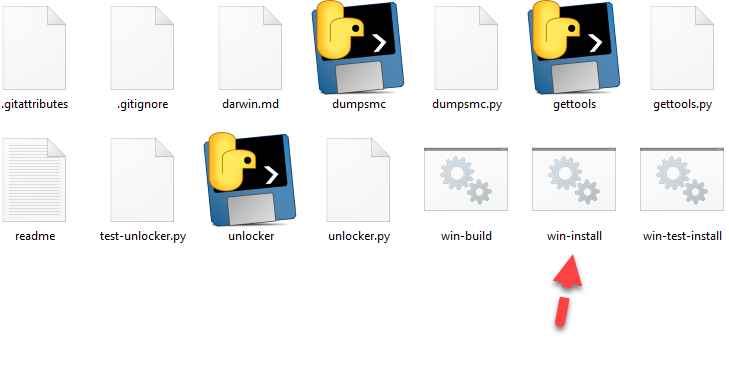 Win-install
Win-install 2. The macOS Unlocker will start installing automatically, you have for some minutes so that it should be successfully installed. When it is completed then the command prompt window will be closed.
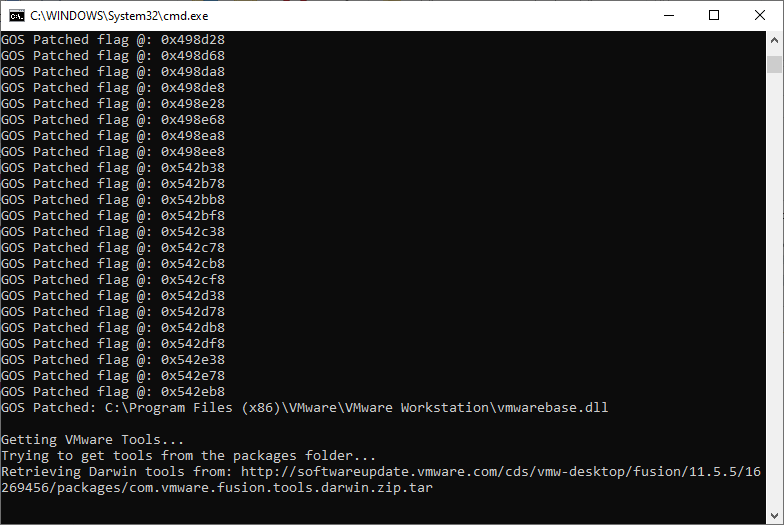 Installing macOS Unlocker
Installing macOS Unlocker Step 4. Create a New Virtual Machine for macOS Big Sur
You have installed VMware on your Windows and as well as its macOS Big Sur. Now, we have to make a specific virtual machine for macOS Big Sur. Therefore, make sure to follow the below instruction.
1. Open the VMware and click on the Create a New Virtual Machine option.
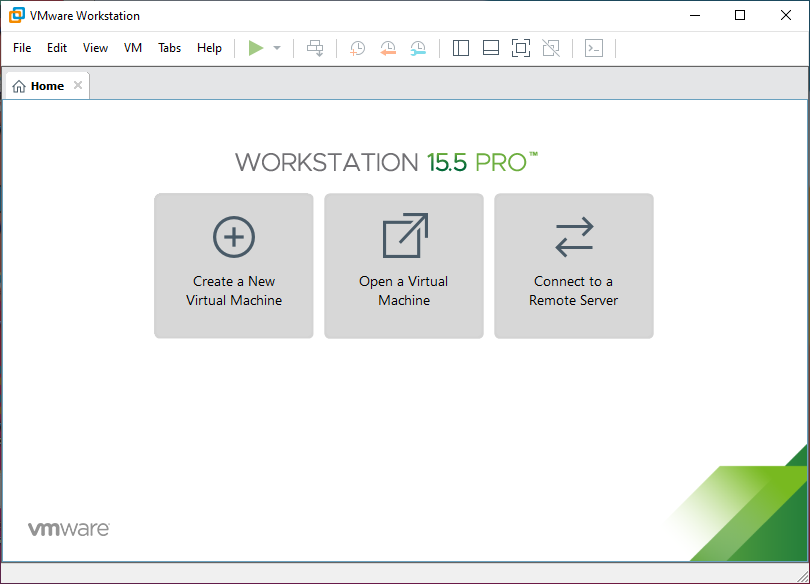 Create a New Virtual Machine
Create a New Virtual Machine 2. On the Welcome screen, you have to select Typical (recommended). and click Next.
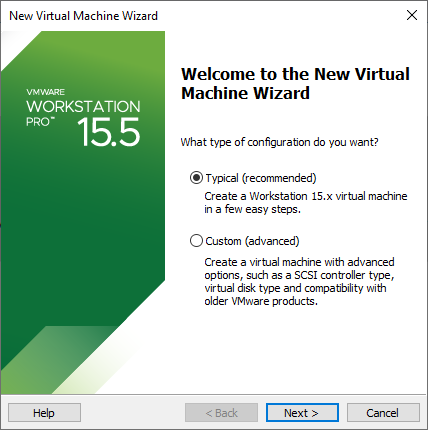 Typical
Typical 3. On the guest operating system installation, you have to choose the third option which is I will install the operating system later.
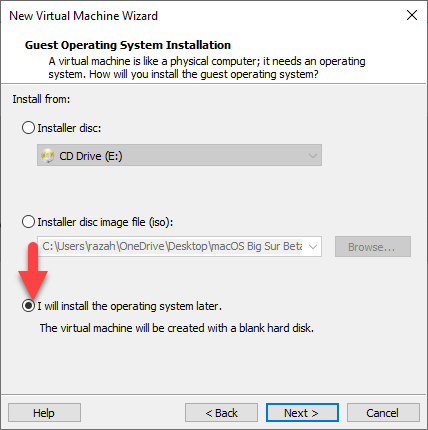 I will Install the Operating System Later
I will Install the Operating System Later 4. You need to select the guest operating system Mac OS X and the version should be 10.16 and click Next.
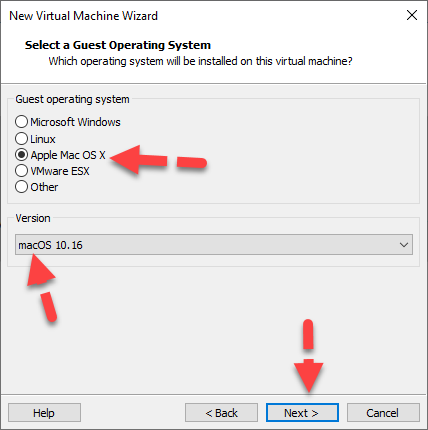 Guest operating system
Guest operating system 5. Name the virtual machine, in my case, I will write macOS Big Sur and also specify the location to install but I recommend you to remain that as the default location, just click Next.
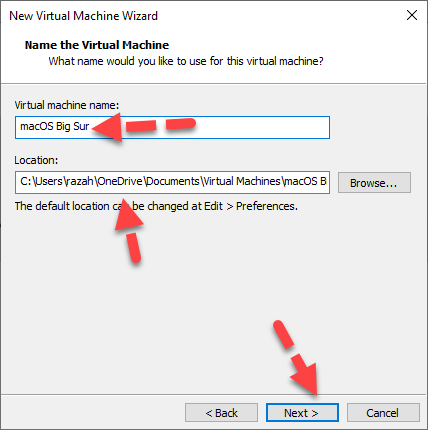 Name the Virtual Machine
Name the Virtual Machine 6. On the Specify Disk Capacity window, you have to increase the storage the minimum should 100GB or more than that. And select the Store virtual disk as a single disk then click Next.
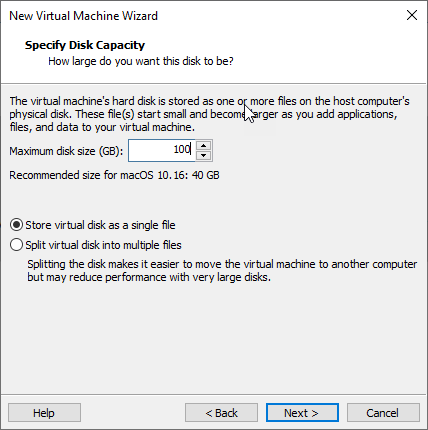 Specify Disk Capacity
Specify Disk Capacity Step 5. Customize Virtual Machine Settings
Once you have created the virtual machine follow the below step to customize the settings for macOS Big Sur.
1. You have to click on the Customize hardware option.
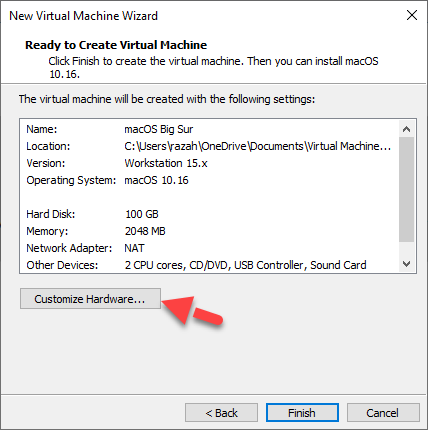 Customize Hardware
Customize Hardware 2. You have to Increase the size Memory up to 2GB or 4GB even more than that for a good performance.
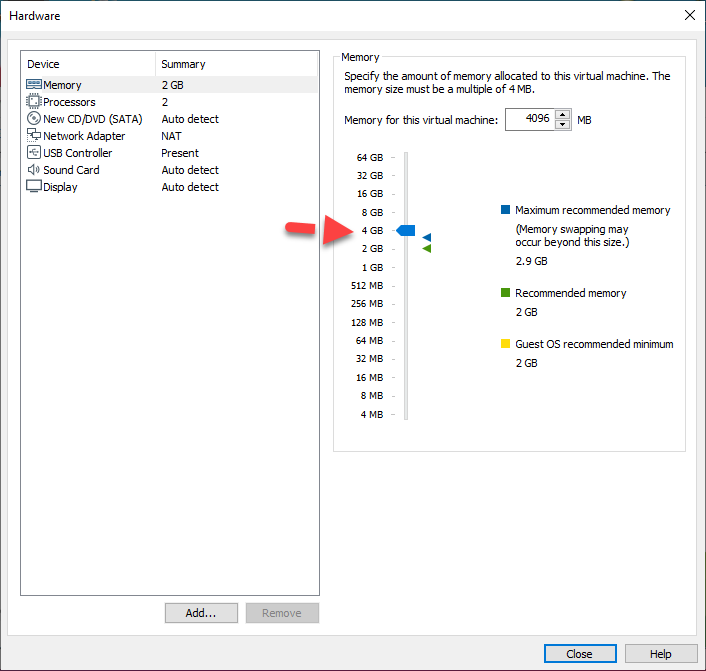
3. Click on the Processor from the left side and you have to increase the number of processors.
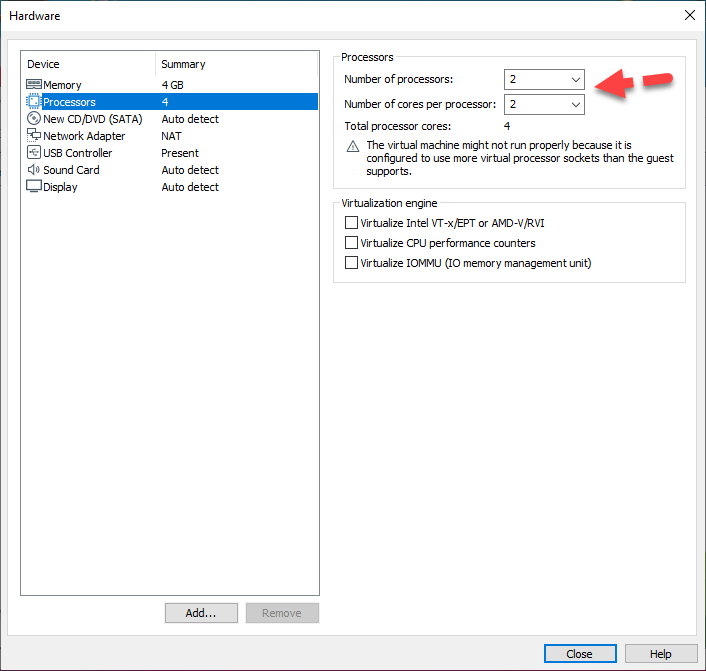 Increase Processor
Increase Processor 4. You have to select the New CD/DVD (SATA) and from the Use ISO Image File section, click on the Browse and insert the macOS Big Sur ISO Image which you have downloaded from the above link.
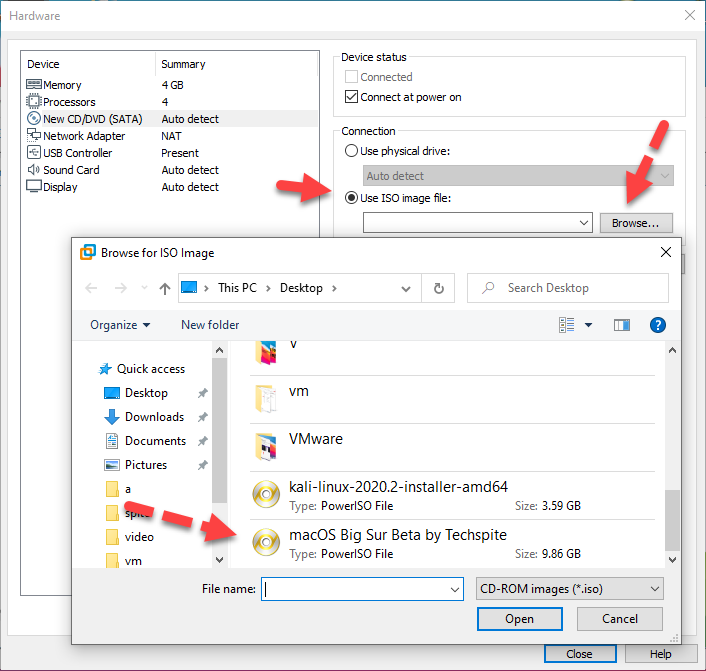 Add macOS Big Sur ISO Image
Add macOS Big Sur ISO Image 5. Once you have done everything correctly, in order to save the changes click on the Close.
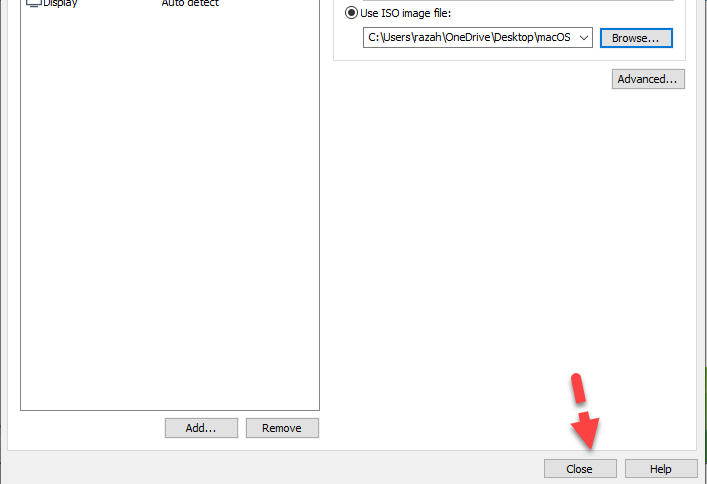 Close Hardware
Close Hardware 6. Now each and everything is ready to go. Therefore, you have to click on the Finish button.
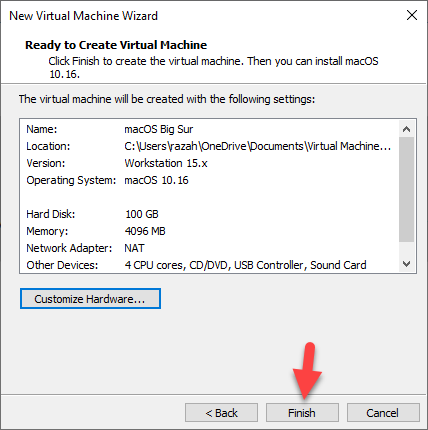 Finish
Finish Step 6. Edit VMX File of macOS Big Sur
Once you have successfully created a new virtual machine. It is time to edit the VMX file of macOS Big Sur. You can find the VMX file on Document > Virtual machine > macOS Big Sur.
When you find the folder, right-click on the macOS Big Sur.vmx and open that with Notepad or other editor software.
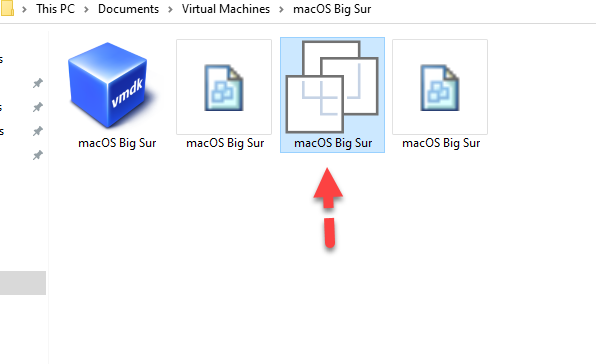 Open with Notepad
Open with Notepad Next up, you have to copy and paste the below codes to the last line. And don’t forget to save the Notepad.
smbios.reflectHost = "TRUE"
hw.model = "MacBookPro14,3"
board-id = "Mac-551B86E5744E2388"
smc.version = "0"
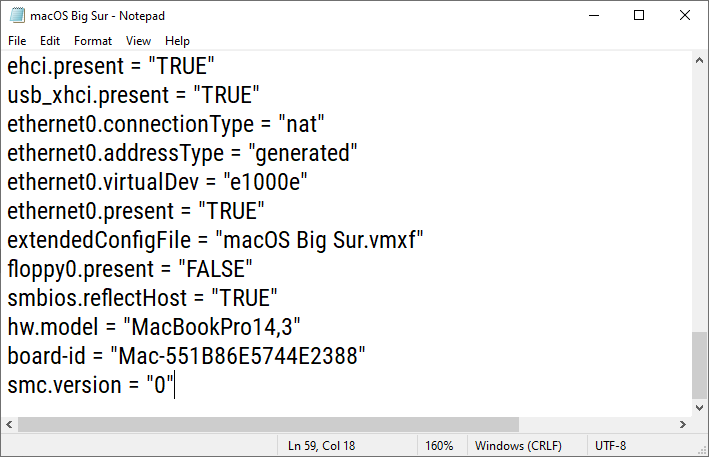 Add codes to VMX file
Add codes to VMX file Step 7. Start the Virtual Machine
You have to select the virtual machine on VMware and click on the Start button.
1. After the Apple logo, at first, you will need to choose the Language which you wish to use in macOS Big Sur.
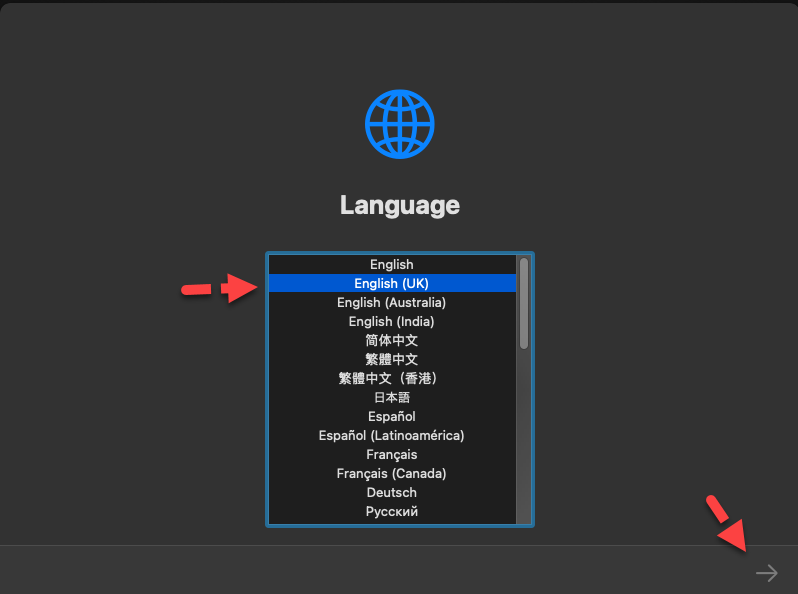 Language
Language 2. You have to select the Disk Utility option and click Continue.
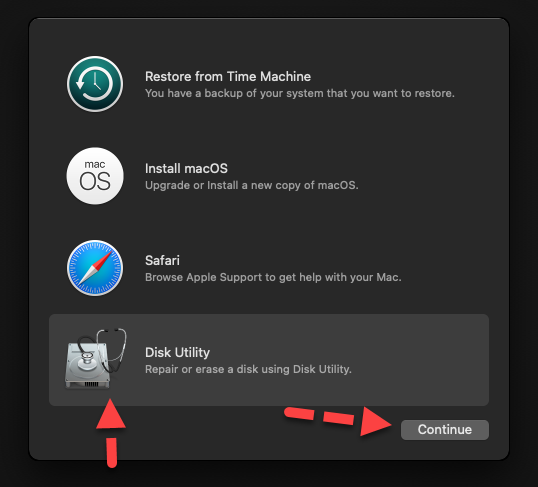 Disk Utility
Disk Utility 3. Now, you have to select the virtual disk which is VMware Virtual System and click on the Erase from the top menu.
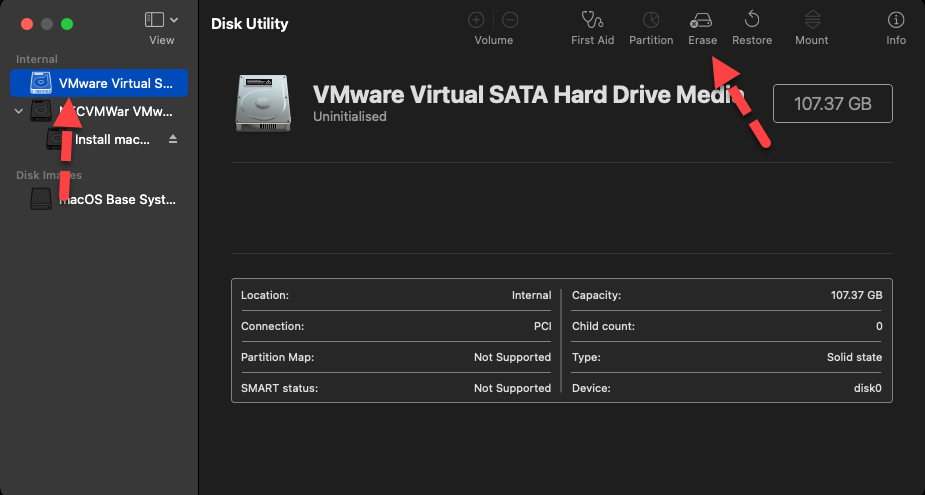 Select Virtual Disk
Select Virtual Disk 4. Give name to the disk and finally click on the Erase.
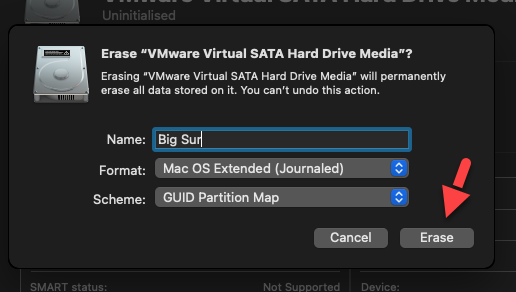 Erase the Virtual Disk
Erase the Virtual Disk 5. Once it is erased, you have to quit the disk utility and go ahead.
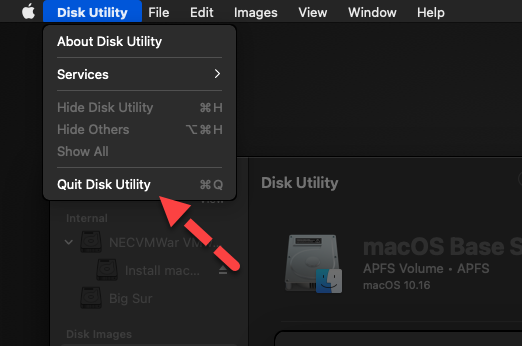 Quit Disk Utility
Quit Disk Utility 6. When you are back on the recovery mode, you have to click on Install macOS and click Continue.
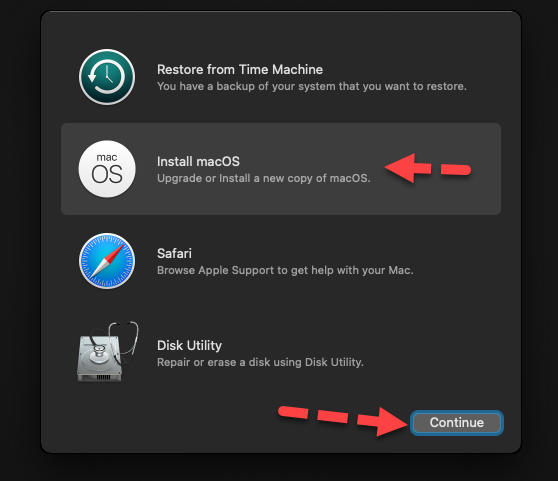 Install macOS
Install macOS 7. Click Continue to go one step ahead.
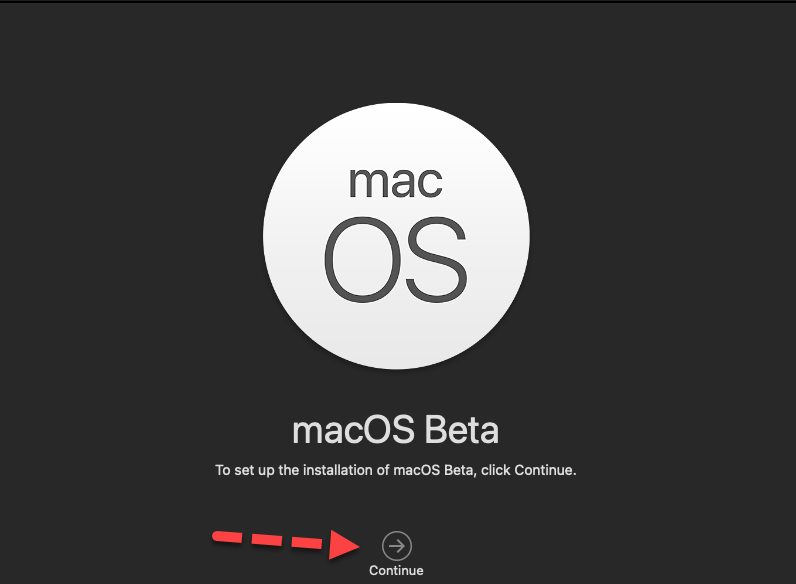 Continue
Continue 8. You need to read the terms and conditions of macOS Big Sur and click on Agree.
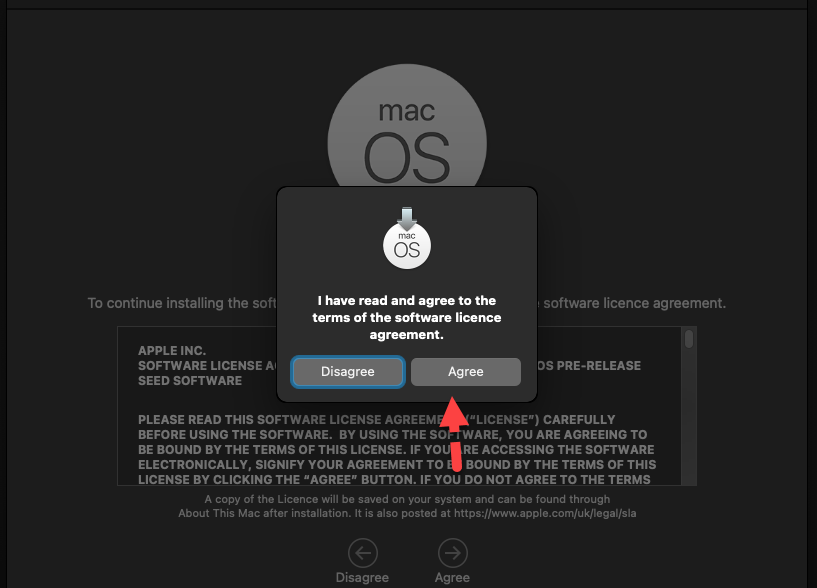 Agree to terms and condition
Agree to terms and condition 9. After that, you have to select the hard disk in which you want to install macOS Big Sur. It is the same hard disk that we have erased before. Anyhow, once it is selected then click on the Install.
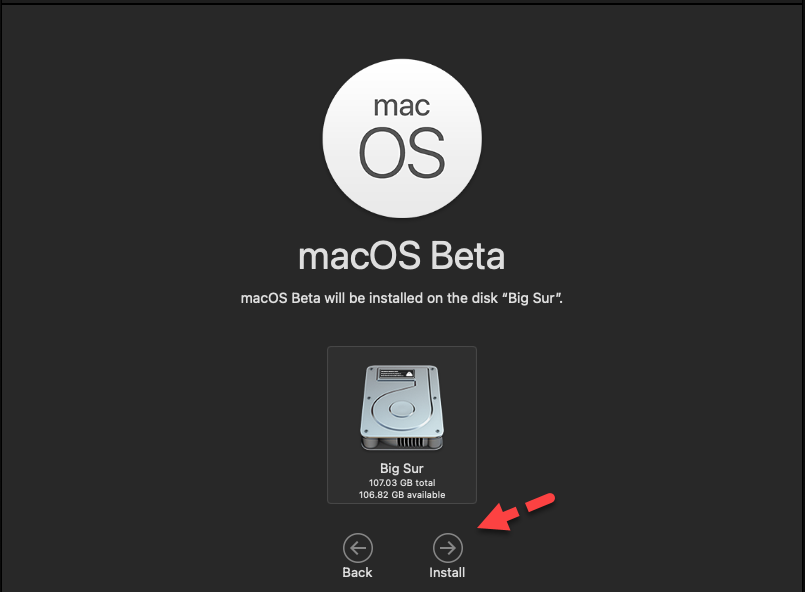 Install macOS Big Sur
Install macOS Big Sur 10. The installation process will be started which will be restarted several times. It will take around 30 minutes or more than that. You don’t need to do anything else, just be patient and wait for the installation to be completed.
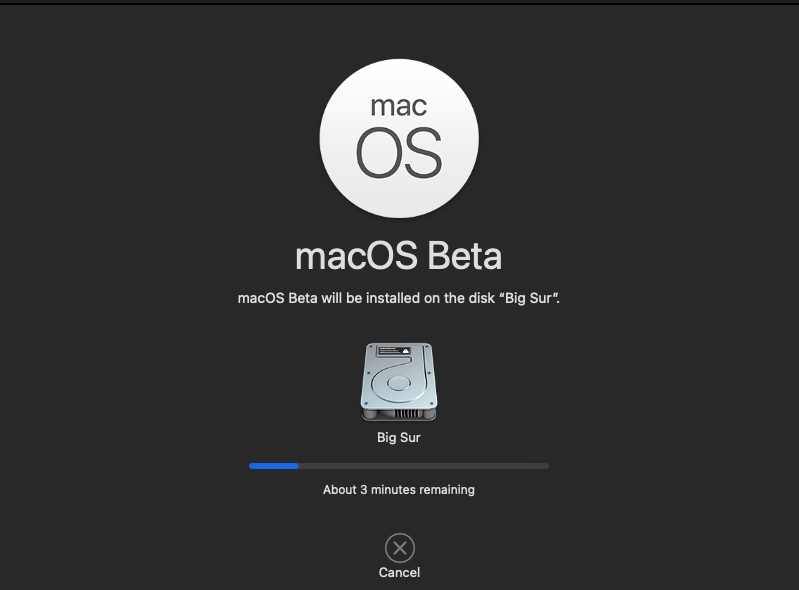 Wait for the Installation
Wait for the Installation Step 8. Perform Clean Installation of macOS Big Sur on VMware
- Select your Country and click Continue.
- Select a Keyboard Layout and click Continue.
- Enable the Accessibility on macOS Big Sur. You will see many accessibility features such as vision, motor, hearing, and cognitive. If you don’t want to use any of them click Not now to skip them.
- Read data & privacy of macOS Big Sur and click Continue.
- On the Migration Assistant window, click on the Not Now button to go ahead.
- On the Apple ID page, click on the Set up later and Don’t sign in because you can add the Apple ID later on.
- Agree to the terms and conditions.
- Write out the Full name, Account name, Password, and Hint then click Continue.
- On the Express set up window, simply click on the Continue.
- Analytics page will be opened, click Continue.
- On-screen time, click on the Set up later.
- Now you have to choose the look for macOS Big Sur and click Continue.
- Finally, it will set up the macOS Big Sur on VMware.
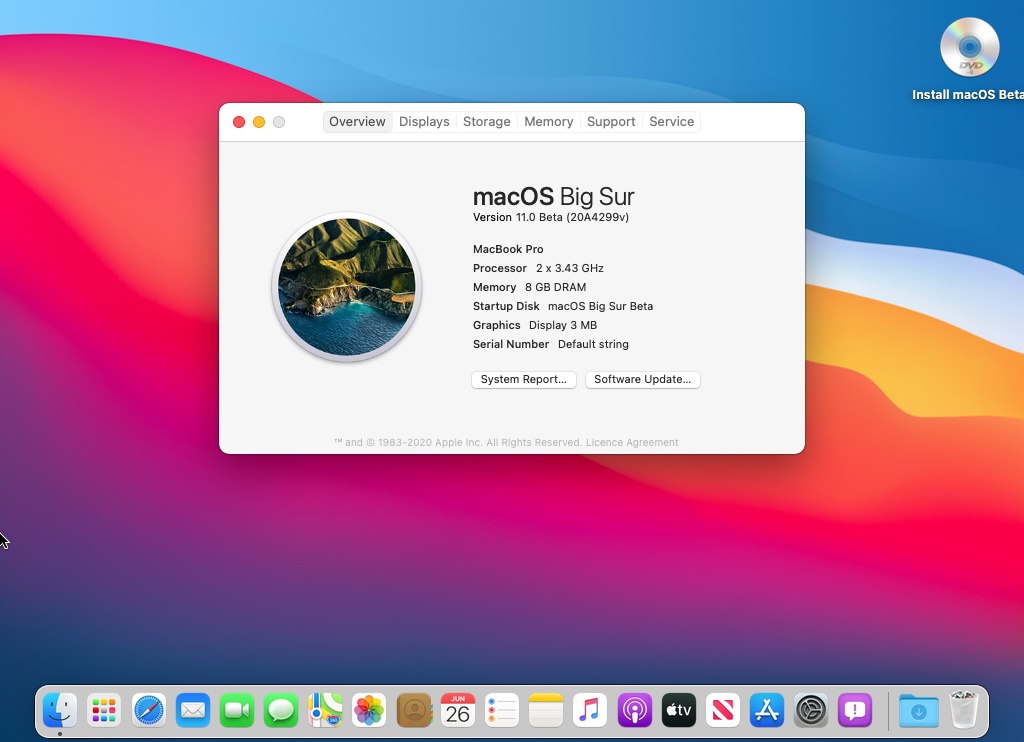 macOS Big Sur Installed
macOS Big Sur Installed Final Words
It was the step by step and in-depth guide on How to Install macOS Big Sur on VMware on Windows PC. Once you have installed it then you can do whatever you want in macOS Big Sur. If you properly follow all the steps then you won’t face any problem. However, I hope you have found this guide helpful. If you have found any kind of problem then don’t hesitate to leave comments in the comment section down below. Your feedback and suggestion will be appreciated and we will be happy to hear.









